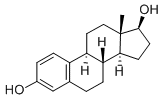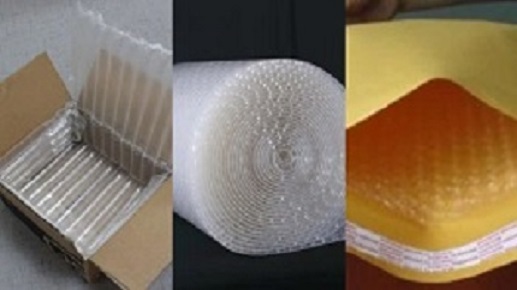
| Name |
|
|---|---|
| Synonyms | 17BETA-ESTRADIOL-16,16,17-D3 BETA-ESTRADIOL-16,16,17-D3 (+)-3,17β-estradiol (17b)-estra-1,3,5(10)-triene-3,17diol (17β)-estra-1,3,5(10)-triene-3,17diol .alpha.-Oestradiol .beta.-Oestradiol 17-.beta.-Estra-1,3,5(10)-triene-3,17-diol 17-.beta.-Oestra-1,3,5(10)-triene-3,17-diol 17-beta-estra-1,3,5(10)-triene-3,17-diol 17beta-Estra-1,3,5(10)-triene-3,17-diol 17-beta-oestra-1,3,5(10)-triene-3,17-diol 17beta-Oestra-1,3,5(10)-triene-3,17-diol 17-beta-oh-estradiol 17beta-OH-estradiol 17-beta-oh-oestradiol 17beta-OH-oestradiol 17β-estradiol 3,17-.beta.-Dihydroxy-1,3,5(10)-oestratriene 3,17-.beta.-Dihydroxyestra-1,3,5(10)-triene |
| CAS NO | 50-28-2 |
| EINECS | 200-023-8 |
| Molecular Weight | 272.38 |
| Molecular Formula | C18H24O2 |
| Melting point | 178-179 °C(lit.) |
| Alpha | D25 +76 to +83° (dioxane) |
| Boiling point | 355.44°C (rough estimate) |
| Density | 1.0708 (rough estimate) |
| Refractive index | 80.4 ° (C=1, Dioxane) |
| Flash point | 2℃ |
| Storage temp | 2-8°C |
| Pka | pKa 10.71±0.02(H2O(0.1% p-dioxane) t=25±0.1 I=0.03(KCl))(Approximate) |
| Form | powder |
| Color | White to off-white |
| Water Solubility | Soluble in dimethyl sulfoxide, ethanol , water, phosphate buffer saline, dimethyl formamide, acetone, dioxane and alkali hydroxides. Slightly soluble in vegetable oils. |
| Merck | 14,3703 |
| Stability | Stable. Incompatible with strong oxidizing agents. |
| BRN | 1914275 |
| Safety Information | |
|---|---|
| Hazard Codes | T,Xn,F |
| Risk Statements | 60-61-45-63-64-40-36-20/21/22-11-48 |
| Safety Statements | 53-22-36/37/39-45-36/37-26-16-36-20 |
| RIDADR | 2811 |
| WGK Germany | 3 |
| RTECS | KG2975000 |
| Hazardous Substances Data | 50-28-2(Hazardous Substances Data) |
| HS Code | 29372390 |
| HazardClass | 6.1 |
| Toxicity | LD50 subcutaneous in rat: > 300mg/kg |
| F | 8-10 |
| PackingGroup | III |
| β-ESTRADIOL Usage And Synthesis | |
|---|---|
| Indications and Usage | Estradiol is a white or milky white ordorless crystalline powder. It is soluble in dioxane and acetone, slightly soluble in ethanol, and insoluble in water. Estradiol is the intermediate between estradiol valerate and estradiol benzoate, and it is a type of estrogen drug. It can be used to treat uterine functional bleeding, primary amenorrhea, menopausal syndrome, and prostate cancer. Estradiol can promote and adjust the normal growth of female sex organs and secondary sex characteristics, promote mammary duct maturation and growth, and aid in posseting. Estradiol can also be used in biochemical research |
| Adverse reactions | In high dosages, estradiol can inhibit the release of anterior pituitary prolactin, thus decreasing breast milk secretion. However, nausea, vomiting and endometrial hyperplasia-induced bleeding may occur. Patients with liver or kidney failure should use with caution. |
| Contradictions | Do not use on breasts, vaginal area and vaginal mucosa. |
| Chemical Properties | White or almost white, crystalline powder or colourless crystals. |
| Chemical Properties | Estradiol, 17-β-is an odorless white to yellow crystalline substance. |
| Uses | 17β-Estradiol is the major estrogen secreted by the premenopausal ovary. This compound is a contaminant of emerging concern (CECs). Drinking water contaminant candidate list 3 (CCL 3) compound as per United States Environmental Protection Agency (EPA), environmental, and food contaminants. |
| Uses | Estradiol is the major estrogen secreted by the premenopausal ovary |
| Uses | Estradiol USP (Estrace) is used to treat Breast cancer; prostatic carcinoma. |
| Definition | ChEBI: The 17beta-isomer of estradiol. |
| Acquired resistance | Estradiol is the most potent endogenous estrogen, exhibiting high affinity for the ER and high potency when administered parenterally. When administered orally, estradiol is promptly conjugated in the intestine and oxidatively metabolized by the liver, resulting in its low oral bioavailability and therapeutic effectiveness. |
| General Description | Estradiol, estra-1,3,5(10)-triene-3,17β-diol, is the most activeof the natural steroid estrogens. |
| Hazard | A carcinogen (OSHA) |
| Biological Activity | Endogenous estrogen receptor (ER) agonist (K i values are 0.12 and 0.13 nM for ER α and ER β respectively). Also high affinity ligand at membrane estrogen GPR30 receptors |
| Contact allergens | Natural estradiol, used in transdermal systems for hormonal substitution, can induce allergic contact dermatitis, with the risk of systemic contact dermatitis after oral reintroduction. |
| Safety Profile | Confirmed carcinogen with experimental carcinogenic, neoplastigenic, tumorigenic, and teratogenic data. A promoter. Human reproductive effects by ingestion: ferthty effects. Experimental reproductive effects. Human mutation data reported. A steroid hormone much used in medicine. When heated to decomposition it emits acrid smoke and irritating fumes |
| Potential Exposure | The working environment may be contaminated during sex hormone manufacture, especially during the extraction and purification of natural steroid hormones; grinding of raw materials; handling of powdered products and recrystallization. Airborne particles of sex hormones may be absorbed through the skin, ingested or inhaled. Enteric absorption results in quick inactivation of sex hormones in the liver. The rate of inactivation is decreased for the oral, alkylated steroid hormones (methyl testosterone, anabolic steroids, etc.). Sex hormones may accumulate and reach relatively high levels even if their absorption is intermittent. Consequently, repeated absorption of small amounts may be detrimental to health. Intoxication by sex hormones may occur in almost all the exposed workers if preventive measures are not taken. The effect in the industrial sector is more successful than the agricultural one (chemical caponizing of cockerels by stilbestrol implants and incorporation of estrogens in feed for body weight gain promotion in beef cattle), where measures taken are summary and the number of cases of intoxication is consequently bigger |
| Shipping | UN3249 Medicine, solid, toxic, n.o.s., Hazard Class: 6.1; Labels: 6.1-Poisonous materials |
| Purification Methods | 17-Estradiol (previously known as -estradiol) is purified by chromatography on SiO2 (toluene/EtOAc 4:1) and recrystallised from CHCl3/hexane or 80% EtOH. It is stable in air, is insoluble in H2O, and is precipitated by digitonin. The UV has max at 225 and 280 nm. The diacetate [3434-88-6] has m 97-98o and forms leaflets from aqueous EtOH. The 3-benzoate crystallises from aqueous MeOH withm 193o and [] D 25 +58o to 63o (c 1, dioxane). [Meischer & Scholz Helv Chim Acta 20 263, 1237 1937, Biochem J 32 1273 1938, Oppolzer & Roberts Helv Chim Acta 63 1703 1980, Inhoffen & Zühlsdorff Chem Ber 7 4 1914 1941, Beilstein 6 IV 6611.] |
| β-ESTRADIOL Preparation Products And Raw materials | |
|---|---|
| Raw materials | Nitrogen-->p-Toluenesulfonic acid-->Lithium-->Potassium borohydride-->Biphenyl-->Acetylacetone-->1,3,5(10)-Estratrien-3-ol-17-one-->Diphenylmethane-->4-ETHYL-2-METHYLPYRIDINE-->ADD |
| Package method |
|---|

FAQ
MOQ: 100 gram
Pack material: Plastic bag + Shockproof film + shockproof envelope + Cartons.
Shipment: By express to buyers’ door. 100% make sure delivery.
Payment: TT/ Western Union/BTC/ETV/VISA and so on, please contact by email.
Shipment time: Within three working days after payment. Usually need ten days to arrive buyers’ address. Resend if lost.

If you have any questions or ask for a quote, please submit your information here and we will respond to you immediately..

Boldenone, Oxymetholone, Drostanolone, Testosterone, Nandrolone, Trenbolone
Copyright © 2008-2022 J·S Biology Co.,LTD All Rights Reserved Design by Huishang Media